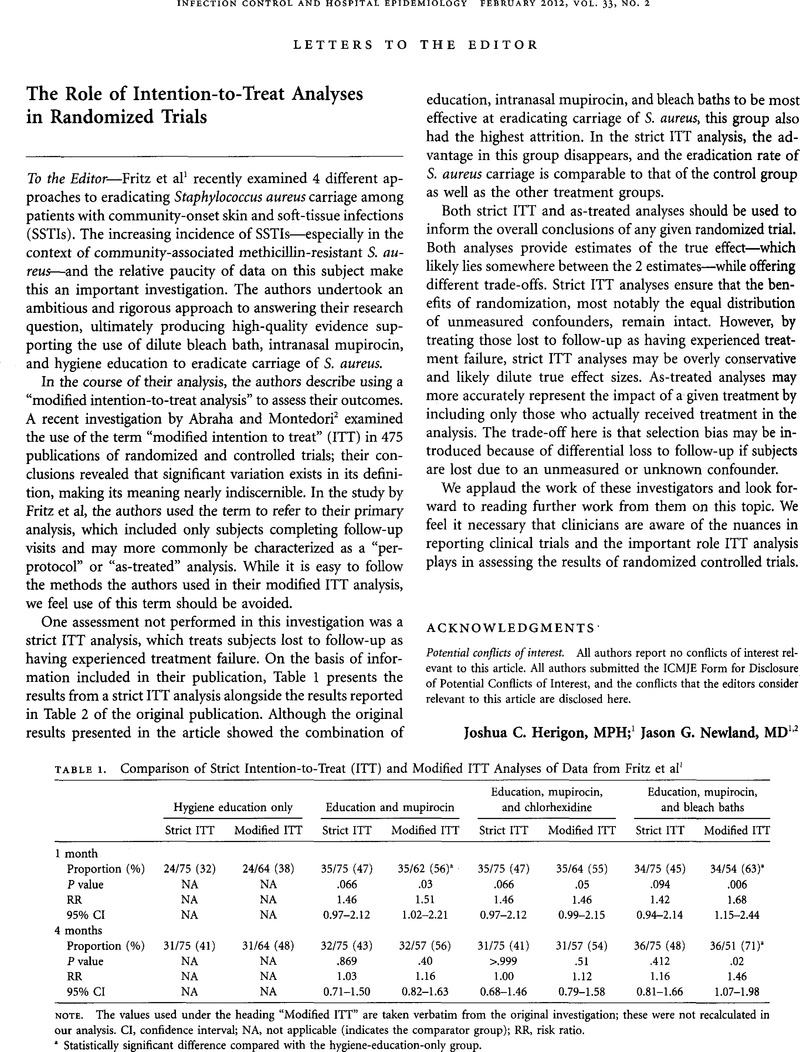Crossref Citations
This article has been cited by the following publications. This list is generated based on data provided by Crossref.
Fritz, Stephanie A.
Camins, Bernard C.
Dukes, Jonathan
and
Storch, Gregory A.
2012.
Reply to Herigon and Newland.
Infection Control & Hospital Epidemiology,
Vol. 33,
Issue. 2,
p.
208.
Thies-Lagergren, Li
Kvist, Linda J
Christensson, Kyllike
and
Hildingsson, Ingegerd
2012.
Striving for scientific stringency: a re-analysis of a randomised controlled trial considering first-time mothers’ obstetric outcomes in relation to birth position.
BMC Pregnancy and Childbirth,
Vol. 12,
Issue. 1,



